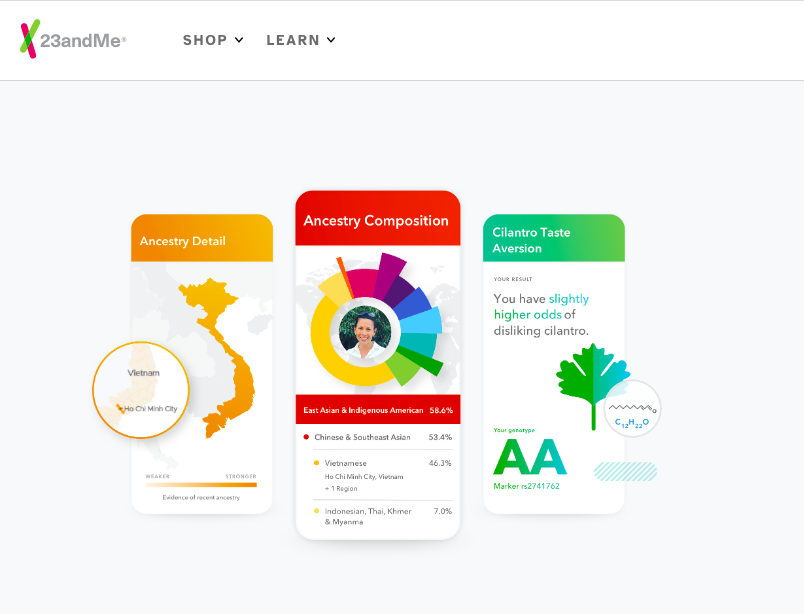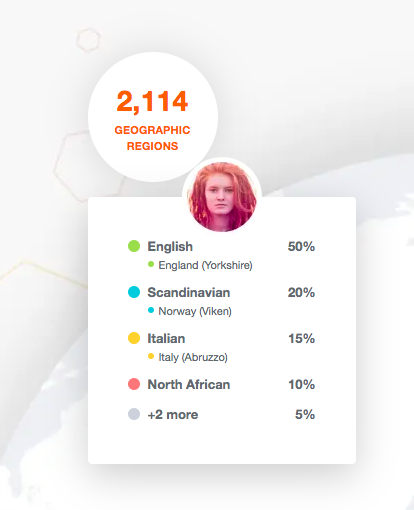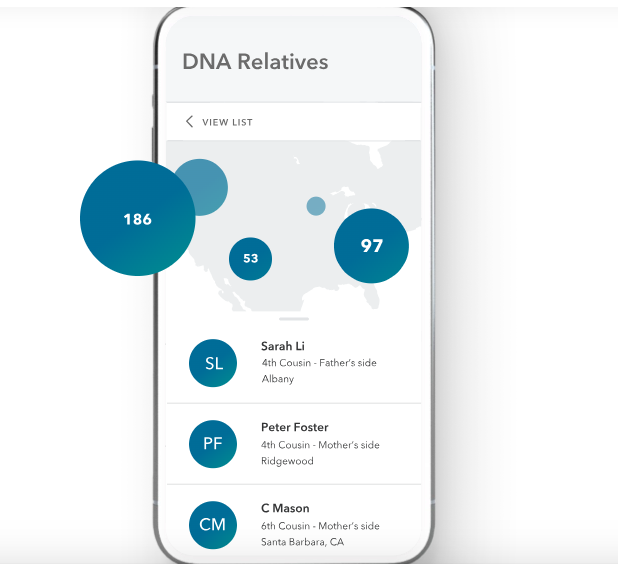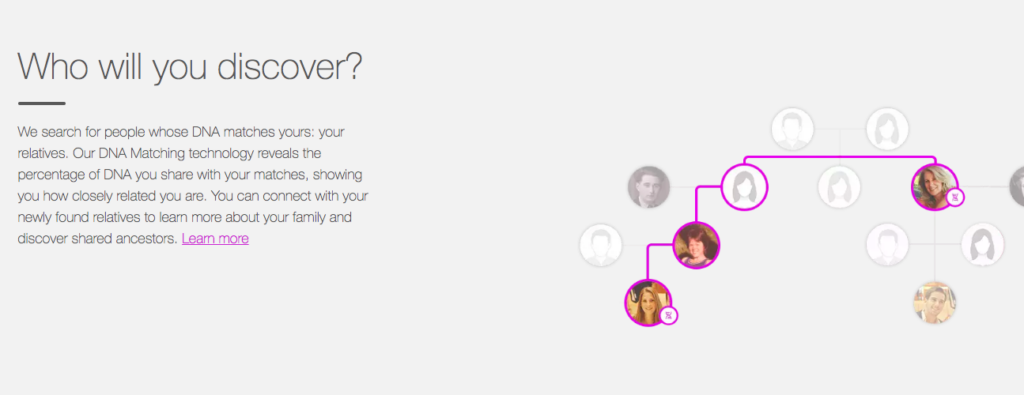23andMe vs MyHeritage DNA: Comparative Analysis

Table of Contents
Overview: 23andMe vs MyHeritage DNA
| Features | 23andMe | MyHeritage DNA |
|---|---|---|
| Ancestry Composition/Ethnicity Estimate | Yes | Yes |
| DNA Relatives/DNA Matches | Yes | Yes |
| Haplogroups | Yes | No |
| Neanderthal Ancestry | Yes | No |
| Ancestry Timeline | Yes | No |
| Family Tree | Yes | Yes |
| Theory of Family Relativity™ | No | Yes |
| AutoClusters | No | Yes |
| Chromosome Browser | No | Yes |
| Detailed Health Reports | Yes | No |
| Raw Data Download | Yes | Yes |
| Raw Data Upload | No | Yes |
| Genetic Health Risk | Yes | No |
| Wellness Reports | Yes | No |
| Carrier Status Reports | Yes | No |
| Traits Reports | Yes | No |
It’s important to note that while 23andMe offers health-related reports, MyHeritage DNA primarily focuses on genealogical data and tools.
Genetic Testing Service
23andMe: 23andMe provides comprehensive ancestry reports and a wide array of health reports. Its ancestry service includes an automatic family tree builder, chromosome browser, and DNA relative finder. The health reports include predisposition to certain health conditions, carrier status for several diseases, wellness reports, and trait reports.

MyHeritage DNA: MyHeritage focuses more on genealogical aspects, providing ethnicity estimates and family matching. It also has a large international database which is beneficial for those seeking relatives outside the US. It does not offer health-related reports.

Geographic Regions
23andMe: 23andMe offers broad and in-depth geographical coverage in their ancestry reports, with over 1,500 regions.
MyHeritage DNA: MyHeritage also has significant geographical coverage but is not as extensive as 23andMe. It covers 42 ethnic regions around the world.
Genetic Health Reports
23andMe: 23andMe offers extensive health-related reports, including genetic predispositions, carrier status for specific conditions, wellness reports, and trait reports.
MyHeritage DNA: MyHeritage does not provide health-related reports as part of its DNA test.
Family Tree
23andMe
- The 23andMe Family Tree feature automatically predicts relationships to DNA relatives on the 23andMe customer’s DNA Relative list.
- It allows users to see their family’s genetic connections and how they might have inherited certain pieces of DNA from shared ancestors.
- The family tree is created using genetic data, which means it won’t include relatives who aren’t also 23andMe customers or relatives who haven’t chosen to share their genetic data with you.
- There’s no option for manually adding family members who haven’t taken a 23andMe test.

MyHeritage DNA
- MyHeritage Family Tree builder allows you to build an extensive family tree, starting with yourself, and add as many relatives as you know. It’s more manual, but it can provide a more complete picture if you have the information to add.
- If you take the MyHeritage DNA test or upload DNA data from another service, you can get ‘DNA Matches,’ which shows you how you’re genetically connected to other MyHeritage members. This can help to expand or confirm your family tree.
- MyHeritage’s ‘Theory of Family Relativity’ feature can suggest how you’re related to your DNA matches based on combined genetic and genealogical data.

Section Summary
If you’re interested in tracing your genetic connections and understanding inherited DNA, 23andMe’s family tree feature could be beneficial. However, if you’re more interested in building an extensive, traditional family tree using known family information and confirming/expanding it using DNA data, MyHeritage could be a better choice.
Price
23andMe: The cost of 23andMe varies depending on whether you’re just getting the ancestry service or including health reports as well. The basic service starts at around $99, while the health plus ancestry service is approximately $199.
MyHeritage DNA: MyHeritage DNA’s basic kit is generally less expensive, often found at around $79. However, they offer fewer features in their basic kit compared to 23andMe.
Database Size
23andMe: 23andMe has a large database of over 10 million people, which is beneficial when looking for DNA relatives.
MyHeritage DNA: MyHeritage also has a large database, with over 3.8 million people. Their strength lies in their international reach, which can be beneficial for those seeking relatives outside the US.
User Privacy
Both companies have strict privacy policies and use secure systems to protect user data. They both allow users to opt out of their research programs and request data deletion.
Raw Data Access and Portability
23andMe: 23andMe allows users to download their raw data, which can be useful for those who want to further analyze their DNA or use third-party tools for additional insights.
MyHeritage DNA: MyHeritage also provides users the ability to download their raw DNA data. Additionally, MyHeritage allows users to upload raw data from other testing services for free, giving more insights from the MyHeritage database.
How to download your 23andMe raw data
Ancestry Composition and Timeline
23andMe: 23andMe’s ancestry reports include an Ancestry Composition that breaks down your heritage by percentage, going back to 500 years or more. They also have an Ancestry Timeline, which estimates when each of your most recent ancestors from each ethnicity was born.
MyHeritage DNA: MyHeritage DNA gives an Ethnicity Estimate, showing the percentage of your DNA that comes from various populations. It doesn’t provide a timeline like 23andMe, but it provides a comprehensive genealogy platform with robust family tree tools.
In-Depth Comparison of Ancestry Reports
23andMe
- Ancestry Composition: This report provides a percentage breakdown of your heritage, identifying your ancestral origins from more than 1500 regions around the world.
- Haplogroups: 23andMe can trace parts of your ancestry to a specific group of individuals from 1,000+ years ago. It helps track the migration patterns of your ancestors.
- Neanderthal Ancestry: This unique feature calculates the amount of your DNA that can be traced back to Neanderthals.
- DNA Relatives: This tool finds and connects you with relatives who share DNA with you.
- Ancestry Timeline: This feature provides estimates of when certain ancestries could have been introduced into your DNA based on the generation where they’re most likely present.
- Family Tree: An automatic family tree builder that uses both your self-reported family information and DNA Relatives to build a family tree.
MyHeritage DNA
- Ethnicity Estimate: MyHeritage DNA provides a percentage breakdown of your heritage from 42 ethnic groups, which is more specific than many other tests.
- DNA Matches: This tool matches your DNA with that of others in the MyHeritage DNA database to identify relatives.
- Family trees: MyHeritage began as a genealogy platform, so it has robust family tree features. Users can build a family tree and connect their DNA results to it.
- Theory of Family Relativity™: This is a unique tool that provides documented theories about how you and your DNA Matches might be related using data from the billions of historical records and family tree profiles on MyHeritage.
- AutoClusters: This tool organizes your DNA Matches into clusters that likely descended from common ancestors.
- Chromosome Browser: MyHeritage provides a chromosome browser that allows you to compare shared genetic sequences with your matches visually.
Section Summary
Both 23andMe and MyHeritage DNA provide robust ancestry reports, each with unique features. The choice between the two depends on what you’re looking to discover. If you’re interested in health reports along with ancestry, 23andMe would be a better choice as MyHeritage doesn’t provide health-related genetic reports. If your primary interest is genealogy and building a comprehensive family tree, MyHeritage DNA might be more suitable.
Health Risk Reports
23andMe: 23andMe’s Health + Ancestry Service includes reports on genetic risks for certain health conditions like Type 2 Diabetes, Late-Onset Alzheimer’s Disease, Parkinson’s Disease, and more. It also provides carrier status reports for conditions such as Cystic Fibrosis and Sickle Cell Anemia.
MyHeritage DNA: MyHeritage does not provide health risk or carrier status reports.
Customer Support
23andMe: 23andMe offers customer support via email, with extensive online resources, FAQs, and a community forum for additional assistance.
MyHeritage DNA: MyHeritage provides customer support via phone and email, and also has a comprehensive Help Center and educational resources.
Summary: 23andMe vs MyHeritage DNA
The choice between 23andMe and MyHeritage DNA depends on what you are looking for from a DNA testing service. If you’re more interested in health reports and detailed ancestry, 23andMe may be the better option. If you’re primarily interested in genealogy and building your family tree, particularly with international relatives, MyHeritage may be the right choice.
As with any genetic testing service, it’s essential to thoroughly read and understand the privacy policies and terms of service before purchasing a kit.
Written By
Share this article












